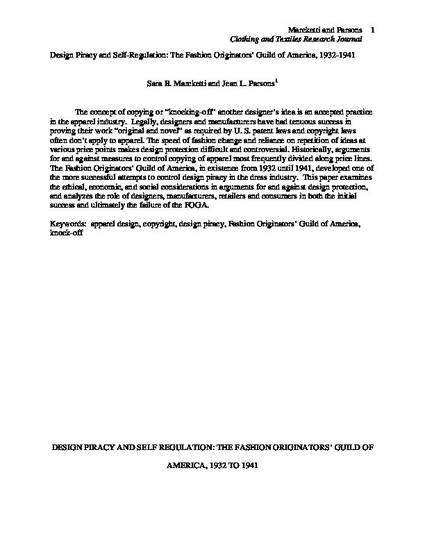
The concept of copying or “knocking off” another designer's idea is an accepted practice in the apparel industry. Legally, designers and manufacturers have had tenuous success in proving their work “original and novel” as required by U.S. patent laws, and copyright laws often do not apply to apparel. The speed of fashion change and reliance on repetition of ideas at various price points makes design protection difficult and controversial. Historically, arguments for and against measures to control copying of apparel most frequently divided along price lines. The Fashion Originators' Guild of America (FOGA, 1932-1941) developed one of the more successful attempts to control design piracy in the dress industry. This article examines the ethical, economic, and social considerations in arguments for and against design protection and analyzes the role of designers, manufacturers, retailers, and consumers in the initial success and ultimately the failure of the FOGA.
Available at: http://works.bepress.com/sara_marcketti/9/

This is an author's final manuscript of an article from Clothing and Textiles Research Journal 24 (2006): 214–228, doi:10.1177/0887302X06293071.